On a relatively warm Hawaiian day, the first of the new year, a colorful snail named George drew its last breath, and with it marked the end of an entire species.
George was 14, born in captivity to two Achatinella apexfulva snails, and likely unaware of what its existence and demise would mean to the world beyond its small, clear enclosure.
It was, after all, just a snail. But to its caretakers and the broader scientific community, it became a symbol of loss, of the frailty of species in a modern world. Its life and subsequent death were featured in publications around the world from National Geographic to the Guardian to a news website in Chile.
Why was a snail’s death international news?
Because Hawai’i has more snail diversity than all of mainland North America north of Mexico. Because to Hawaiians, they are called “singing snails.” They are good omens — signs all is well in the world.
And because 60 to 90 percent of Hawai‘i’s 750 species of native snails are already gone — victims of predation, habitat destruction and climate change — with more likely to blink out within months or years.
“We estimate that many large ground and tree snails will be extinct in the next five years if nothing is done to intervene… and trying to make an impact across a large scale and so many species is a difficult task,” says David Sischo, the Snail Extinction Prevention Program Coordinator for Hawai‘i’s Division of Forestry and Wildlife. “We have the tools, but we have to decide we want to devote resource to these issues.”
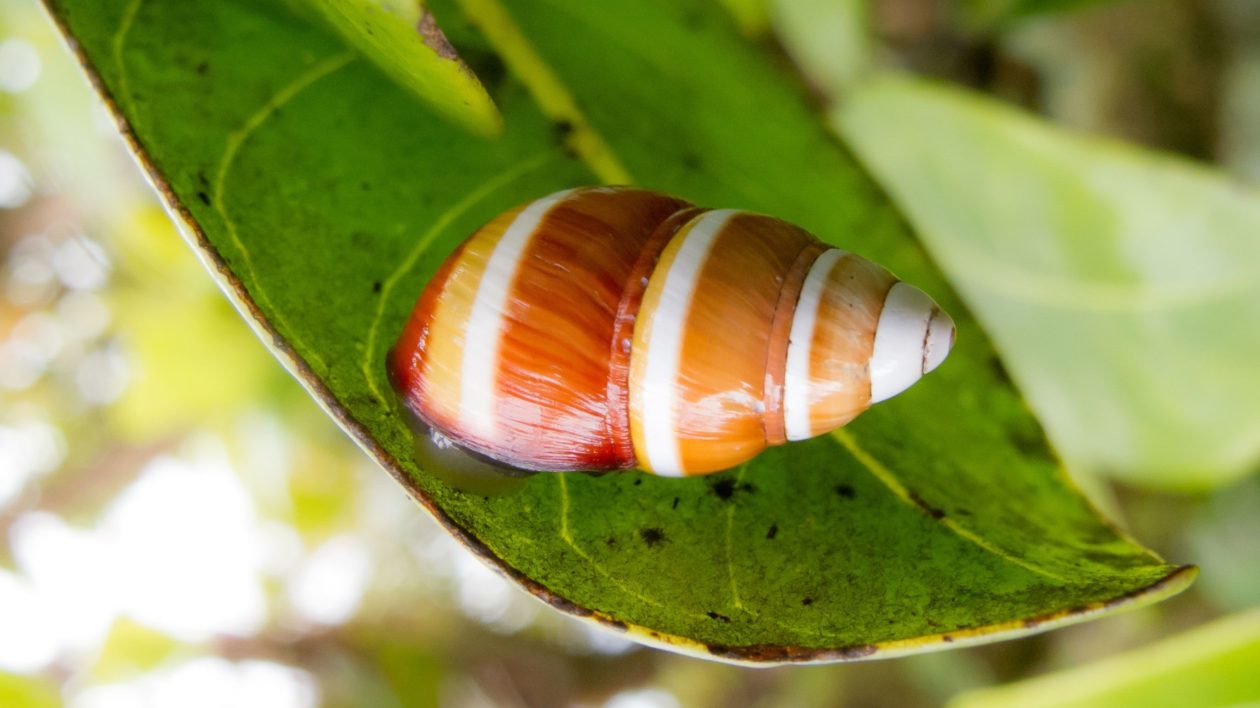
Snail Carnage
Snails have been on the Hawaiian islands for millions of years. They evolved separately and uniquely, varying by size and color depending on the region that population calls home.
They might seem like one of the least charismatic creatures, but for the Hawaiian islands, they are an indicator species — the canary in the coal mine.
“They’re more vulnerable than other species,” Sischo says. “They disappear quicker.”
Snails spend their lives sliding across leaf surfaces and the forest floor consuming and processing algae, fungus and bacteria. They’re responsible for turning over ecosystems, for breaking them up and making them more variable, and for providing the base with which many other species can thrive. Some species live up to 18 years, methodically moving throughout a range as small as a tree. They can take up to five years to reproduce and only have four to six babies a year.
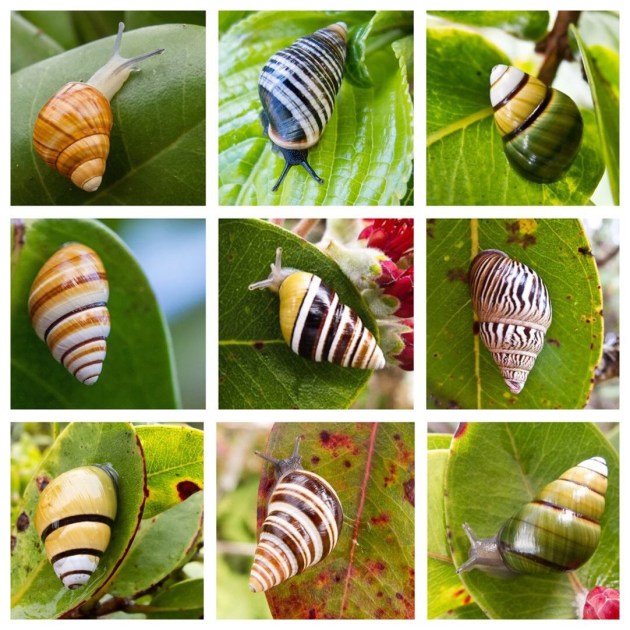
To Hawaiians, the uniquely colorful creatures that can vary from pure whites and shiny greens to bold combinations of vanilla, mocha, almond and fudge embody the tradition of passing stories along through singing and chanting. If snails were mentioned in a story, something good was happening.
Because of their biological and cultural significance, University of Hawai’i biology professor Michael Hadfield has made identifying those species part of his life’s work. He started wandering Hawai‘i’s lush mountainsides in the ‘70s marking small quadrants and counting snails.
“We would take all the snails you could see out of the tree, measure each one and give it a name like A23, which we would mark on the shell and cover with lacquer and put them back on the tree,” he says. “With those data you never kill a snail, but get all of the information on the demography, how big they are, how old they are when they mature, how many babies they have every year.”
What he and his colleagues realized was that many snail species were vanishing. Achatinella, with 41 species, was placed on the endangered species list in 1982. With the listing came more money for surveys, but the snail carnage continued.
It was on one of those surveying trips that Hadfield found a group of Achatinella apexfulva on the side of a trail. They were notable with their turban-shaped shells and distinct markings. A couple years later, someone had cut most of the brush down in which they were living, and soon after that, Hadfield found empty shells littering the ground.
He quickly gathered the 10 remaining Achatinella apexfulva and brought them to a captive breeding facility. There, George was born.
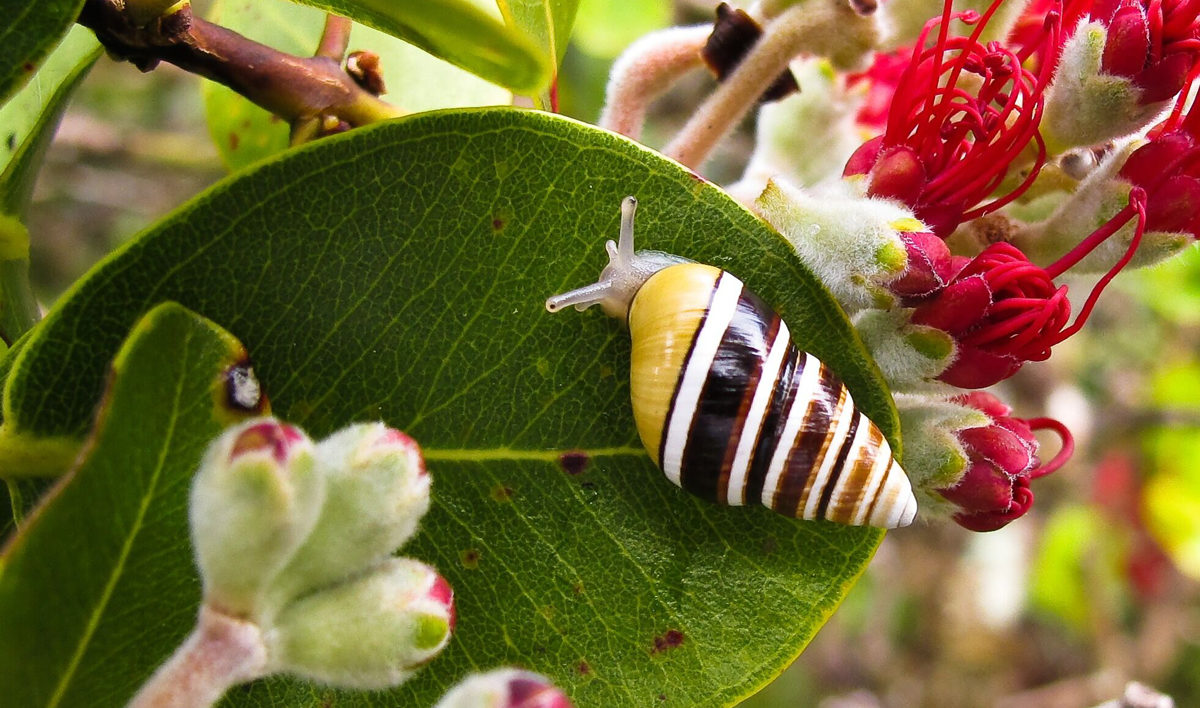
The Big, Bad Wolfsnail
Like most ecological stories, George’s ancestor’s trials were complex.
His family faced an onslaught of predators from the ground and sky.
Nonnative rats and Jackson’s chameleon, a species introduced from Kenya for the pet trade, preyed on snails. Climate change is drying lower elevations on the islands and sending snails to shrinking habitat on mountain tops. Habitat destruction in the form of deforestation for agriculture and timber and the introduction of invasive plants and animals.
But probably the biggest threat — and one of the most overwhelming for researchers — is the rosy wolfsnail.
The comparatively large and aggressive snail was brought to Oahu from Florida as a biocontrol to address the giant African snail. But instead of controlling the African snail, it has proliferated, attacking native snails on nearly every island.
“They have shells up to 6 centimeters long, and they are very fast moving,” Hadfield says.
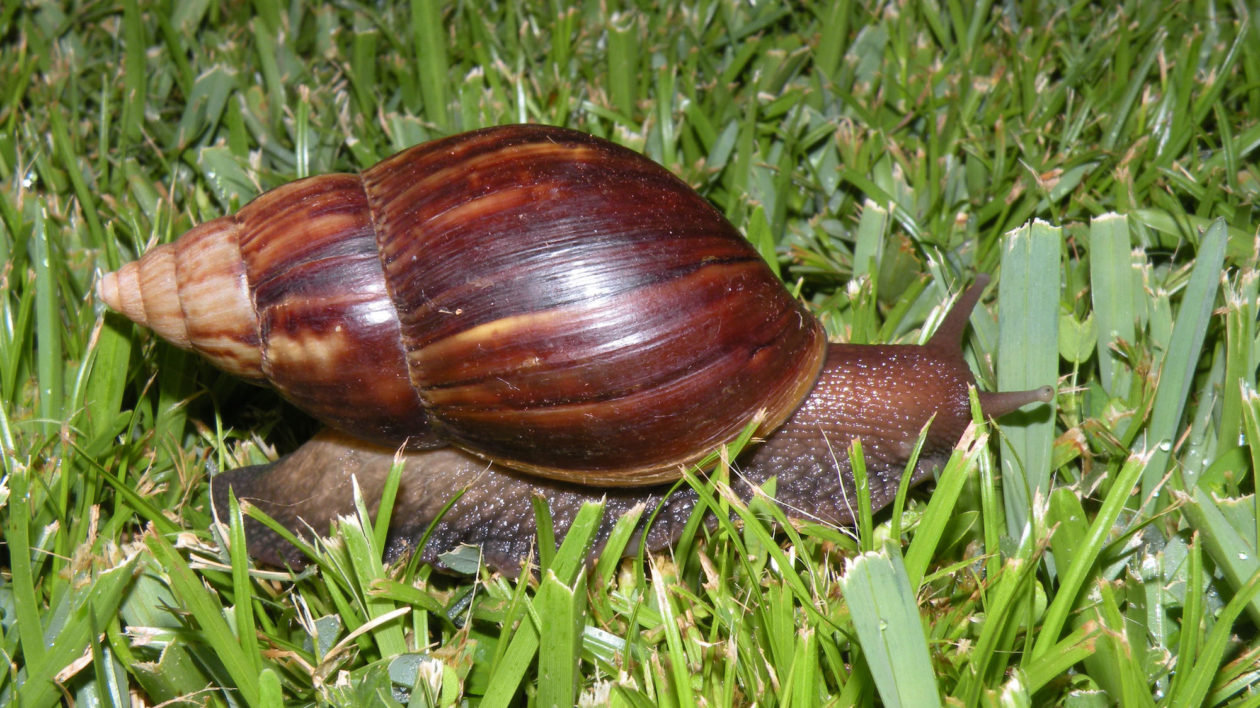
Rosy wolfsnails use sensitive tentacles to find slime trails left by other snails.
“When they hit it they literally rear up, and it looks like a lion. Then they roll the snail over to find the opening. The wolfsnail has a proboscis that shoves into the shell and a powerful jaw, and they can take a little shell at a centimeter across and empty it in 10-15 minutes,” he adds. “When you’re looking at them close up, you know you’re looking at something like a lion going after a gazelle.”
Hadfield largely blames habitat changes and the rosy wolfsnail for the demise of Achatinella apexfulva in the wild.
While captive breeding has successfully brought some species back from the brink, it failed for the Achatinella apexfulva. A few reproduced, but they slowly died until all but one remained.
Researchers nicknamed the survivor George, after Lonesome George, the last of the Pinta tortoises on the Galapagos. (While George often is talked about with the pronoun “he,”snails are, in fact, hermaphrodites).
There George remained as researchers scoured islands for other possible members of Achatinella apexfulva with no luck. While there always exists a chance another Achatinella apexfulva is surviving, officials consider it likely extinct.
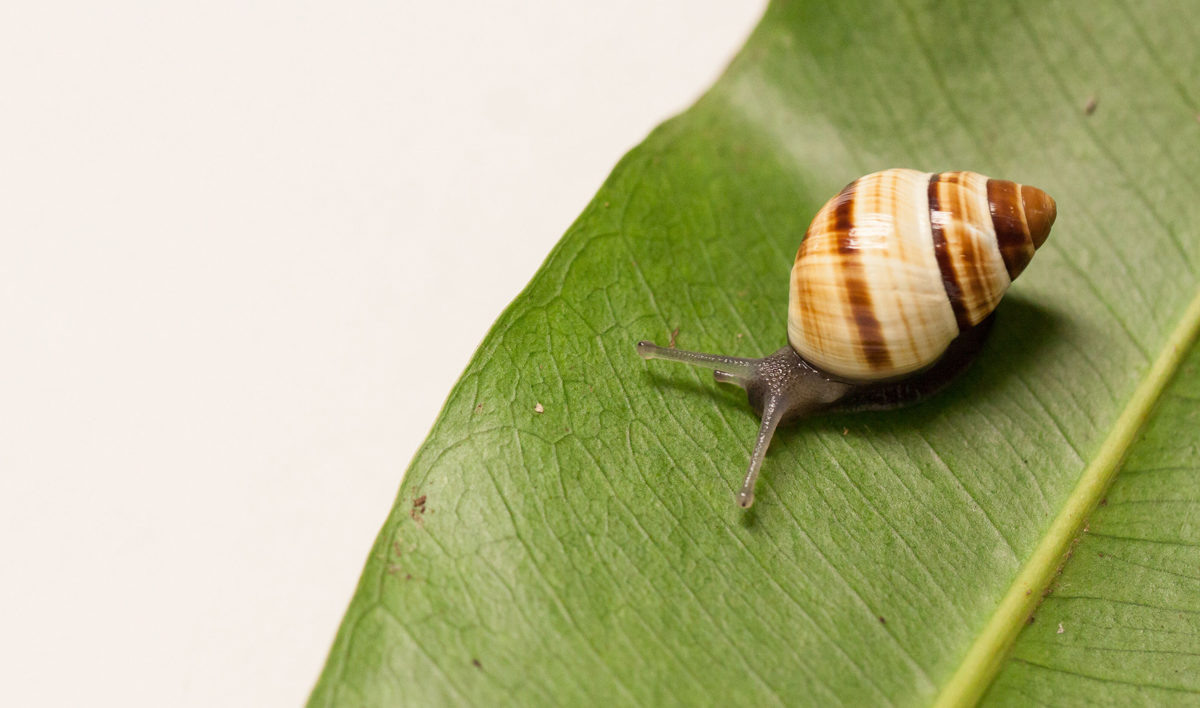
Saving the Snails
What’s most frustrating to Melissa Price, a professor at the University of Hawai’i at Mānoa and an endangered species expert, is that many of these snails really can be saved.
Those that have gone extinct cannot come back, but the remaining 25 percent of the Achatinella have a chance.
It just takes money — money for surveys and for enclosures around native snail populations that keep predators out.
Researchers in Hawai‘i have worked for years with experts in New Zealand to develop the best method, and it was no easy task. The solid-wall fences surround between a quarter and one acre of land, are made of plastic or metal and have a curved hood at the top. The slick walls keep out rats and mice.
The rosy wolfsnails then face a gauntlet of challenges.
“An angled piece of metal like a flange skirts the fence at a 15-degree angle, and the rosy wolfsnail has a difficult time navigating it,” Sischo says. “We also have a shelf that sticks out with sharp wire mesh and it’s difficult for the snails to get a purchase on it to cross.”
If a wolfsnail somehow makes it past each of those, it will be electrocuted.
Researchers are using the enclosures to surround snails still living in the wild, and reintroduce snails they’ve bred in captivity. The captive breeding facility — which Sischo sometimes calls the “love shack” — has more than 30 species that are extinct or close to extinct in the wild, many waiting for a place to return.
It might be too late for George, researchers say, but it is not yet too late for many others struggling to survive in an ever-changing landscape.
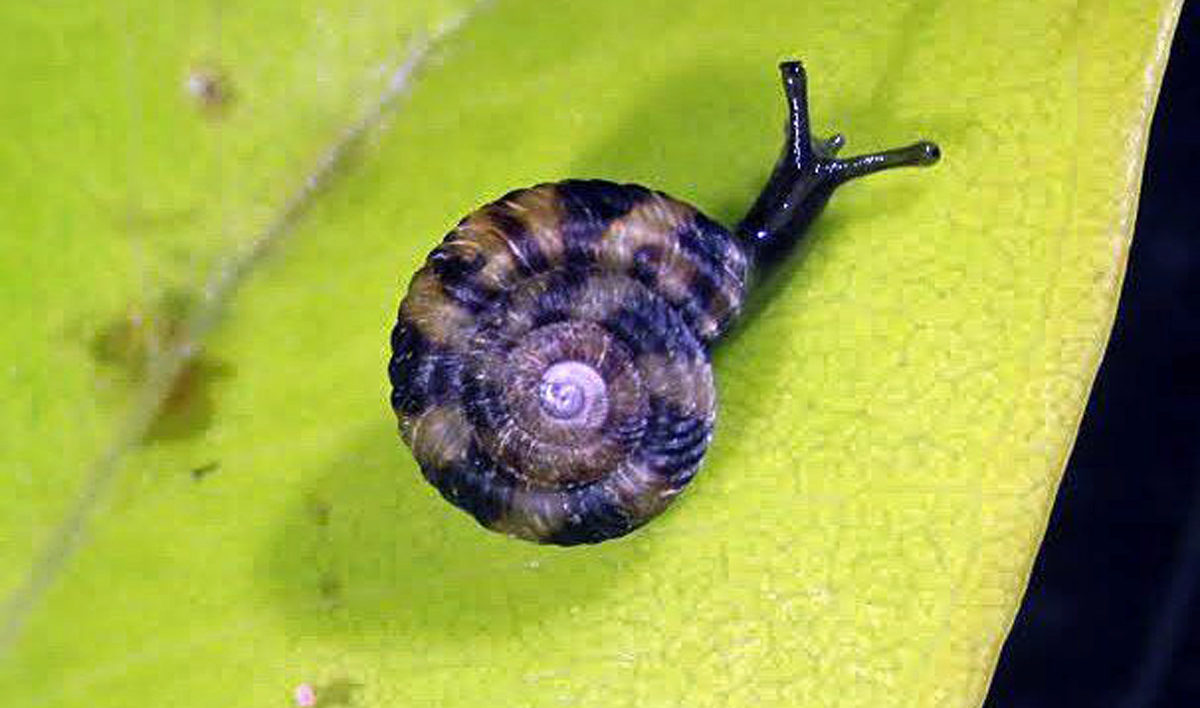
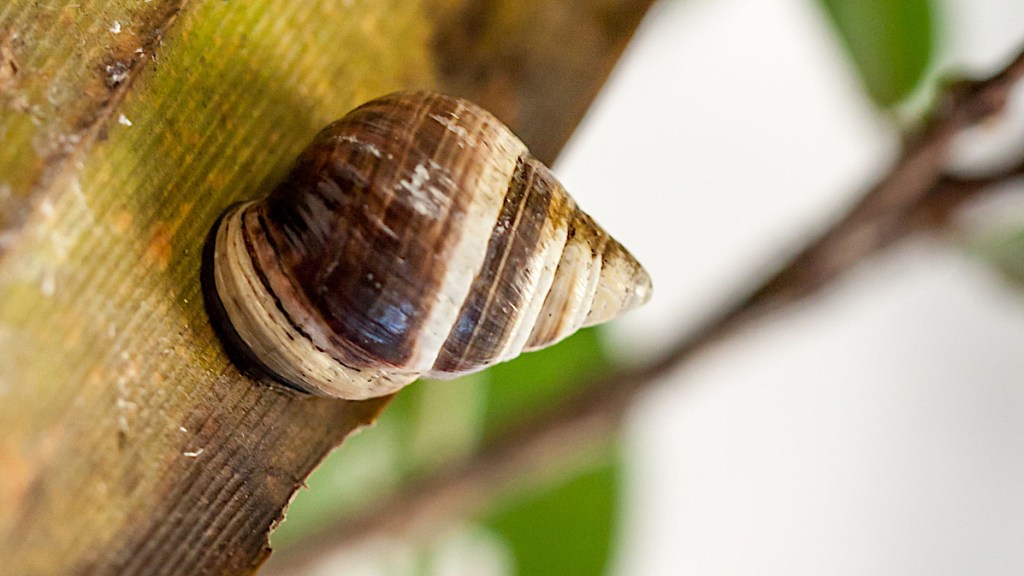



It is certainly upsetting to hear that yet another species is now at great risk of disappearing. “”The canary in the coal mine””……with each passing year I am more worried about the reports of many species on the brink, with many people remaining totally oblivious to these silent but disturbing occurences.
To learn that between 1970 and 2014 60% of the world’s mammals, birds, fish were lost made me sick to my stomach. I wish I felt more hopeful for the future, but with this administration and Republicans in office pathetic attitude toward our environment, wildlife it is absolutely infuriating to witness…
Hi! Great story, mahalo for sharing. Just one correction…please edit the photo labeled as rosy wolfsnail (Euglandina rosea). The photo posted is of an african snail (lissachatina fulica).
Wow — I didn’t know that I’d actually care about this topic, but the headline caught me (kudos) and the writing kept me. You’ve told a story, as the best writing in Cool Green Science always does. Thanks, Christine.
Thanks for shining further light on this story and Hawai’i’s extraordinary native snails. The Nature Conservancy’s Hawai’i program has been involved in protecting these tree snails since 1982 when Kamakou Preserve on the island of Moloka’i was established. The beautiful Partulina mighelsiana that you show in this article is from that forest region. Mike Hadfield helped us document and monitor several species of Partulina and brought some into captivity. Ed Misaki and his team on Moloka’i know the real-world complexities of protecting a forest in all its dimensions, including these dazzling little invertebrate wonders.
Very informative and also quite sad.